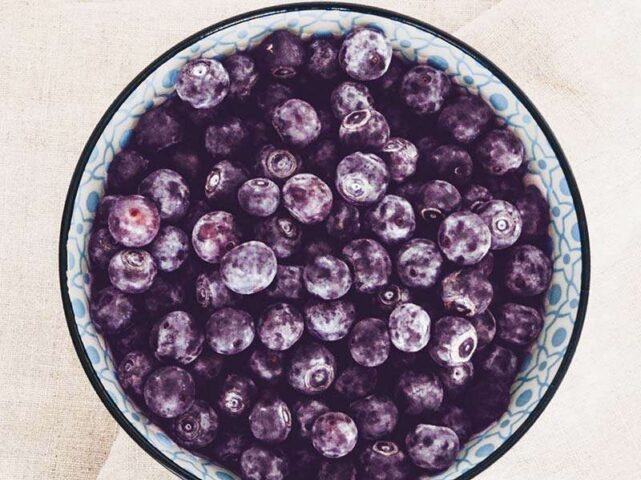By The LCWNS Team
Caring For Babies with FPIES Food Allergy
Parents and caregivers of young children with food allergies face a myriad of complexities and anxieties when it comes to managing their child’s dietary needs. The constant fear of accidental exposure to allergens can be overwhelming, leading to heightened vigilance in monitoring food encounters, meal preparation, and eating out. This level of caution is necessary to prevent potentially life-threatening reactions in their child. Similarly, parents and caregivers of children with Food Protein-Induced Enterocolitis Syndrome (FPIES) also face significant challenges in this area. Keep reading as we explore the definition, causes, and presentation/signs and symptoms of FPIES, as well as its diagnosis and management.
What is FPIES?
Food allergies and FPIES both cause abnormal reactions to specific foods1; however, the main difference between the two lies in the mechanism of these reactions. Food allergies involve an immune system response to a specific food protein, leading to immediate symptoms such as hives, swelling, or anaphylaxis2. In contrast, FPIES is not mediated by the immune system and does not typically result in immediate reactions3. Instead, FPIES causes delayed gastrointestinal symptoms such as vomiting, diarrhea, and dehydration hours after consuming the “trigger” food1.
Common FPIES Triggers
Any food can instigate an FPIES reaction, but the most common culprits include the following:1,3
- Cow’s milk
- Soy
- Grains, particularly rice and oats
Individuals may also react to:
- Poultry
- Seafood
- Egg
- Peanut
It is important to note that each child’s triggers can vary widely, and some may react to more than one type of food4.
FPIES Symptoms
As previously mentioned, FPIES symptoms mainly impact the digestive system1 and can be classified as acute or chronic.
- Acute FPIES symptoms usually appear within hours after consuming the trigger food, causing cyclical vomiting and diarrhea3. Prompt treatment with intravenous fluids is essential to prevent dehydration and potential life-threatening complications4.
- Chronic FPIES symptoms, on the other hand, are more insidious and may present as failure to thrive, malabsorption, and chronic diarrhea3. These symptoms can have a significant impact on a child’s growth and development if left unaddressed.
FPIES Diagnosis
One of the most frustrating and challenging aspects of FPIES is that symptoms may not occur immediately after food ingestion but instead present a few hours later1,3. Unlike traditional allergy testing, FPIES also cannot be detected via blood or skin testing4. Instead, diagnosing FPIES requires health care professionals and parents to take a more investigative approach by closely monitoring symptom development, keeping detailed records of foods and reactions, and collaborating closely4.
FPIES Management and Treatment
Fortunately, FPIES rarely persists past age 3-41, but it is still important to know how to manage the condition. Key considerations include the following:
- Trigger Food Identification and Avoidance: Identifying and avoiding trigger foods is the main way to prevent FPIES reactions. To achieve this, individuals can read food labels and research restaurants ahead of time to ensure they have safe options available. It is also crucial to understand how to interpret labels for hidden sources of allergens, such as cross-contamination or alternate names for common allergens, in order to prevent adverse reactions.
- Emergency Action Plan: An emergency action plan outlines specific steps to take in case of a reaction, including recognizing symptoms and seeking immediate medical assistance. Having a plan in place can help reduce the risk of complications and improve outcomes for individuals with FPIES.
- Medical Complications: Dehydration is a common complication of FPIES due to the excessive fluid loss from persistent vomiting and diarrhea. It is essential to closely monitor individuals with FPIES for signs such as dry mouth, decreased urine output, and lethargy5 and seek prompt medical intervention (i.e., IV fluids, medications) to prevent further complications3.
- Nutritional Implications: Due to the wide variety of foods that individuals with FPIES could react to, ensuring adequate nutrition for growth and development and preventing deficiencies is essential. Thus, it can be extremely helpful to consult with a dietitian and/or your pediatrician.
References
- Food Protein-Induced Enterocolitis (FPIES) | Symptoms & Treatment. ACAAI. Published March 21, 2019. Accessed June 26, 2024. https://acaai.org/allergies/allergic-conditions/food/food-protein-induced-enterocolitis-syndrome-fpies/
- Mayo Clinic. Food Allergy – Symptoms and Causes. Mayo Clinic. Published December 31, 2021. Accessed June 26, 2024. https://www.mayoclinic.org/diseases-conditions/food-allergy/symptoms-causes/syc-20355095
- Food Protein-Induced Enterocolitis Syndrome (FPIES). www.chop.edu. Published February 23, 2014. Accessed June 26, 2024. https://www.chop.edu/conditions-diseases/food-protein-induced-enterocolitis-syndrome-fpies
- Food Protein-Induced Enterocolitis Syndrome (FPIES). Aaaai.org. Published 2023. Accessed June 26, 2024. https://www.aaaai.org/tools-for-the-public/conditions-library/allergies/food-protein-induced-enterocolitis-syndrome-fpies
- Cleveland Clinic. Dehydration. Cleveland Clinic. Published June 5, 2023. Accessed June 26, 2024. https://my.clevelandclinic.org/health/diseases/9013-dehydration








